Food and drink highlights of Spain
- Tipping - Tipping in Spain is around 5% of the bill, however, not routinely expected. Even 20 cent coins are pawned as a tip.
- Eating hours -
- Shopping hours - The hours between 2 and 4 PM are considered a time for relaxation. Shops and restaurants are usually closed during those hours.
- Discount shops -
- Cuisine type - Aromatic, based mainly on natural ingredients, it is very colorful and tasty. Many common dishes are fried or contain large amounts of olive oil.
- Savoir Vivre - Use utensils to eat most food. Knife and fork are using even to eat fruit. Remain standing until invited to sit down.
- Main ingredients - The main four ingredients in Spanish cuisine are olive oil, tomatoes, white bread, and wine.
- Most popular alcohol - The most popular drink in Spain is wine, which is traditionally served with meals. However, they are often mixed with various additives such as juice, Fanta, Cola, and they are also filled with ice or fruit. Spaniards, as a rule, drink one glass of wine during their meal.
Did you find this information valuable?
Thank you for co-creating with us! 😊 Remember to give us feedback by pressing the thumbs up or down under every section.
The quality of content is essential for us. Please let us know what influenced your opinion.
Thank you!
Foods to try in Spain
- Pimientos de PadrónDelicious green peppers fried in olive oil and served with coarse salt. Perfect hot or cold, eaten as a side dish or alone, washed down with cold, white, dry wine
- Tortilla de patatasA delicious potato omelette served with a lot of various additives. The most famous, basic version is the one with the potatoes alone or potatoes and onions. You find version with chorizo, seasonal vegetables or delicious cheeses - there\'s something for everyone.
- PaellaOne of the most famous Spanish dishes. Served in a characteristic, large pan with two handles. Paella is fried rice with toppings. Most traditional form is rice flavored with saffron, with seafood and beans. The chicken version is popular, but created mainly at the request of tourists.
- PintxosSmall starters, especially popular throughout the Basque country. Each restaurant understands pinxtos in its own way - from tiny sandwiches, to fried seafood for one bite, to vegetarian options. We can usually choose from a dozen or so different dishes in a small version.
- JamónDried ham is a typical Spanish dish. Served as an appetizer, snack with wine, on sandwiches or with the main course.
Did you find this information valuable?
Thank you for co-creating with us! 😊 Remember to give us feedback by pressing the thumbs up or down under every section.
The quality of content is essential for us. Please let us know what influenced your opinion.
Thank you!
Unusual facts about food in Spain
- A big part of the cuisine is tapas - bite-sized dishesh shared with friends in a bar.
- Spain is responsible for 43.8% of the world's olive oil production.
- Almost 75% of the world's saffron is grown in Spain.
- The Spanish claim to have invented fried fish.
- Tomatoes, potatoes, avocados, tobacco, and cacao were imported to Europe by Spaniards.
Did you find this information valuable?
Thank you for co-creating with us! 😊 Remember to give us feedback by pressing the thumbs up or down under every section.
The quality of content is essential for us. Please let us know what influenced your opinion.
Thank you!
Place to stay in Spain
- Best booking sites -
- Seasonality - Regardless of the choice of accommodation type in Spain, the prices will depend on the season.
- Cost-effective - The cheapest accommodation option in Spain are hostels and rooms in university dormitories, available not only for students.
- Formalities - When registering at the hotel, you should show your passport or ID card and complete the registration form.
- Air conditioning -
- Payments - In small hotels it is best to pay the bill the day before departure, especially if you plan to leave early in the morning.
- Local names - Spain has about 140 hostels (albergues de juventud), and they are not limited to young people. Some are equipped for persons with disabilities.
- Unusual accommodation - If you are looking for unique accommodation in Spain take a look at www.spain.info/en/top/unique-accommodation-spain.
- Camp - There are over 800 campsites in Spain, two-thirds of them on the coast. The campsites also have a rating system: L (luxury), first class (1a), second class (2a) and third class (3a).
Did you find this information valuable?
Thank you for co-creating with us! 😊 Remember to give us feedback by pressing the thumbs up or down under every section.
The quality of content is essential for us. Please let us know what influenced your opinion.
Thank you!
Accommodation in Spain
- If you are looking for the cheapest option, think of a lower class hotel. It's usually located in the outer areas of the city, and it offers a bed in a shared room or a private room with a shared bathroom.
- A guesthouse is a family-owned business located away from the city that offers small, usually double rooms with a private bathroom and access to a shared kitchen (generally with breakfast included).
- A mid-range hotel is usually located near the city center and offers rooms with a private bathroom, air conditioning, and TV.
- A Higher-class hotel is located in a city center or near main attractions. It offers rooms with a private bathroom, air conditioning, mini-bar (usually consisting of free water), TV, and additional services such as all-inclusive meals & drinks offer and room service.
- A luxurious resort offers big suites, including a living room, bedroom, and bathroom, with access to a gym, swimming pool, all-inclusive meals & drinks, private room service, etc.
Did you find this information valuable?
Thank you for co-creating with us! 😊 Remember to give us feedback by pressing the thumbs up or down under every section.
The quality of content is essential for us. Please let us know what influenced your opinion.
Thank you!
Getting around Spain
- Most popular - High-speed trains are the most popular in intercity communication. In large cities, however, it's very well-developed public transport network.
- Cost-effective - Usually, the cheapest option to travel will be buses, especially if you think about buying a ticket a little earlier.
- Time-efficient - The fastest means of communication in Spain is the metro. In contrast, between distant cities you definitely should think about the plane.
- Traffic safety - Traffic in Madrid and Barcelona is fairly fast. Because of farm animals you should be carefully during night drive on outside city areas.
- Important - Helmets must be worn on motorbikes, mopeds and bicycles.
Bus
- The tickets are usually bought right after entering the bus. It's best to have a change.
- If you wish to stop, you should press the button - some bus stops are on demand.
- Check the timetable before traveling - it changes from month to month or from morning to evening.
- You can buy single tickets on the buses, but in cities such as Madrid and Barcelona, you are better off buying combined 10-trip tickets that allow the use of bus and metro, which work out cheaper per ride.
Train
- Fast and regional trains are available.
- You should buy a ticket before entering the train - the most common way is via the internet or by using ticket machines.
- You should seat on your assigned seat.
- The connection search engine with timetables for RENFE and Media long-distance trains is available at www.renfe.com/es/en/viajar/prepara-tu-viaje/horarios. After searching for a connection, the ticket price is also displayed.
Car
- When driving on a motorway, don’t react angrily to cars flashing their headlights before overtaking you. It’s the law!
- The current speed limit in town is 50km/h; on open roads 90 km/h to 100 km/h and on motorways 120 km/h. Throughout Bilbao's city in Spain, the municipal government has imposed a speed limit of 30 km / h!
- Read your rental agreement carefully - there are often hidden costs and surprises.
- To rent a vehicle you must be at least 21 years old and have a valid driving license. Many companies also require you to have had your driving license for a minimum of one or two years, and you will need a credit card.
Taxi
- Agree on a price before taking the taxi.
- Spanish taxis are among the cheapest in Europe, and many people use them on their daily basics.
- Taxis are black or white with a horizontal red stripe on the side and the city’s coat of arms on the doors.
- In all cities and major urban areas, taxis are fitted with meters - make sure that it’s switched on.
Metro
- Madrid has the country’s most extensive metro network. Barcelona has a good system. Valencia, Zaragoza, Bilbao, and Seville have limited but nonetheless useful metro (or light rail) systems.
Hitchhiking
- It is safe, but it is not a popular form of travel.
- Hitchhiking in Spain is considered to be a rather higher art. Spaniards are more familiar with blablacar, so it is better to immediately check with the driver if it is a free ride.
- Due to the size of the country and the number of roads, the wait may be longer.
Plane
- There are nearly 50 airports in Spain. An airport of great importance is Madrid's Barajas as it acts as a link between South America and Europe.
- Barcelona Airport is 10 km from Barcelona and can be reached quickly and easily by a dedicated bus.
Did you find this information valuable?
Thank you for co-creating with us! 😊 Remember to give us feedback by pressing the thumbs up or down under every section.
The quality of content is essential for us. Please let us know what influenced your opinion.
Thank you!
How to travel in Spain
- Most often, a good way to travel from town to town is via the Spanish National Rail Network (Renfe).
- Coach buses are a very popular form of transportation.
- Be careful when crossing the road if, like most Spaniards, you miss the traffic lights.
- In some Spanish cities, trams transportation is returning. In Barcelona you will find suburban trams, in Valencia you will get to the beach, and several lines can also be found in Seville, Bilbao, Murcia and Zaragoza.
- The most interesting means of transport in Spain is the Teleférico de Madrid cable car, recognized in Madrid.
Did you find this information valuable?
Thank you for co-creating with us! 😊 Remember to give us feedback by pressing the thumbs up or down under every section.
The quality of content is essential for us. Please let us know what influenced your opinion.
Thank you!
Best time to visit Spain
When to go
- The summer months of July and August are the best to visit northern Spain. Cities near the Atlantic like Santiago de Compostela, Oviedo, Santander, and San Sebastian experience their best weather and least rainfall during these months.
- Up north, the bests months are May, June, and September, when the temperatures aren't at their highest, but it's still pleasantly warm outside.
- Up south, the best months to travel are January, February, March, April, May, and October, when the temperatures aren't at their highest, and there are not as many tourists.
- The best period to go to Spain is between May and September, as it ensures good weather and most tourist attractions.
Rainfall
- It's raining mostly in spring and autumn.
- In northern Spain, heavy rainfalls can be expected during the summer months (July, August). Occasional rain can appear during the winter months.
- In the middle of Spain, most rainfalls occur during the spring and autumn months, with a sudden weather change during the day and occasional thunderstorms.
- Up south, most rainfall happens during autumn and early winter. Occasional thunderstorms can be expected during summer.
Temperature
- In northern Spain, the average temperature is between 14 to 18 °C.
- In the middle of Spain, the average temperature is between 15°C to 22°C.
- Up south, the average temperature is around 25°C. High, almost African temperatures during summer can be expected. The winters are very mild.
Spring
- In northern Spain, spring tends to be windy and cloudy, with occasional rainfall and temperatures reaching up to 15°C.
- In the middle of Spain, spring tends to be windy and cloudy. Rapid weather changes can occur. Some villages experience soft snowfall in March and April.
- Up south, the spring is warm. Most days are sunny, with an occasional rainfall possible.
Summer
- Up north, many thunderstorms occur during July and August.
- In the middle of Spain, summer is hot and dry with occasional thunderstorms. July is usually the warmest month with an average temperature of 32℃.
- Up south, the summer is very hot and dry, with extreme temperatures often reaching over 40°C in the shadow. It's best to wear sunscreen at all times and protective clothing. Nights are warm, with the occasional thunderstorms.
Fall
- Up north, fall is characterized by stable weather.
- In the middle of Spain, fall is mild, but the temperature changes quickly. Expect wind, mist, and occasional rain.
- Up south, the fall is mild and sunny.
Winter
- Up north, mist and light rainfalls can be expected.
- In the middle of the country, winter can be harsh, with regular snowfall. It's best to bring warm clothing.
- Up south, the winter is mild, with little to no rain in later months and a lot of sunny days. It's best to bring some warm clothing just in case. Occasional mists can occur during evenings and early mornings.
Did you find this information valuable?
Thank you for co-creating with us! 😊 Remember to give us feedback by pressing the thumbs up or down under every section.
The quality of content is essential for us. Please let us know what influenced your opinion.
Thank you!
Spain weather Insights
- There are three different climate zones in Spain.
- The Mediterranean climate brings hot, dry summers and rainy but light winters.
- The Meseta climate in central Spain is characterized by dry summers and cold winters.
- The Maritime climate in the north of Spain brings cold summers with heavy rain and mild winters.
- The mountains in the country's central plateau have a higher rainfall and often experience heavy snowfalls in winter.
Did you find this information valuable?
Thank you for co-creating with us! 😊 Remember to give us feedback by pressing the thumbs up or down under every section.
The quality of content is essential for us. Please let us know what influenced your opinion.
Thank you!
Savoir-Vivre in Spain
- Greetings - Shake hands with everyone once you arrive. Expect two kisses on each cheek, a hug or a pat on the back from the people you know already.
- Punctuality -
- Dress code - Don't wear beachwear outside the bay area. It's prohibited.
- Temple entrance - Make sure to dress accordingly to avoid any trouble If you are visiting a sacred place like a monastery, or church. It's best to cover your shoulders and knees.
- Home invitation - When invited to a home for dinner, it is customary to give the host or hostess a gift: a good bottle of wine, flowers, chocolates, and/or a dessert. It is worth ensuring the gift is beautifully wrapped.
- Etiquette - It is good for the man to pay for the woman, the person inviting for the guests. Quarrel about who pays badly perceived.
- Drones - We recommend using this map to easily check the applicable restrictions. If you are looking for more specific information take a look here.
Did you find this information valuable?
Thank you for co-creating with us! 😊 Remember to give us feedback by pressing the thumbs up or down under every section.
The quality of content is essential for us. Please let us know what influenced your opinion.
Thank you!
Things not to do in Spain
- Leave your valuables in the hotel safe. Wear a money belt to keep money, card, and phone close to your body to avoid pickpocket attacks, especially in bigger cities and means of transportation.
- Plan your shopping before or after the mid-afternoon break (siesta) that occurs between 2 and 4 PM.
- Don't watch the street entertainers for too long, as the pickpockets are likely to steal from you during the show.
- Don't ignore regional differences. Be aware that the north is very different from the south.
- Don't try to be over polite - it's normal to say something without 'please', 'thank you' or 'sorry'.
Did you find this information valuable?
Thank you for co-creating with us! 😊 Remember to give us feedback by pressing the thumbs up or down under every section.
The quality of content is essential for us. Please let us know what influenced your opinion.
Thank you!
Interesting facts about Spain
- Spaniards tend to speak one over another, don't bother and just join the conversation.
- Catalonia has its own language.
- The highest Spanish mountain Pico del Teide is not in Spain - it's located on the Canary Islands.
- Instead of Santa Claus, children await Three Kings around Christmas time.
- Spain has its equivalent of Oscars - Premio Goya.
Did you find this information valuable?
Thank you for co-creating with us! 😊 Remember to give us feedback by pressing the thumbs up or down under every section.
The quality of content is essential for us. Please let us know what influenced your opinion.
Thank you!
Best souvenirs from Spain 💝
Spain is a dream destination for all those who like excellent gastronomy, interesting culture and great architecture. Check what souvenirs to bring with you to remember your wonderful trip to Spain for as long as possible!
🍺 Beverages
Cava 💲 💲 💲 💲
Cava is a Spanish version of champagne with a golden color. This beverage, which originated in Catalonia, is highly appreciated all over the world. It is ideal for parties or to toast a good trip!
📌 Region: Catalonia
🛒 Where to buy: markets, supermarkets, liquor stores
💰 Price range: 10 - 30 EUR
🎁 For whom: grandparents, parents, friends, spouse

Cider 💲 💲 💲 💲
Cider is the second most consumed alcohol by the Spanish, after wine. Made from apples, it is lighter and sweeter. It tastes best chilled, served until the afternoon snack. There is also an acidic flavor version available.
📌 Region: Asturias
🛒 Where to buy: supermarkets
💰 Price range: 3 - 20 EUR
🎁 For whom: grandparents, parents, spouse, friends
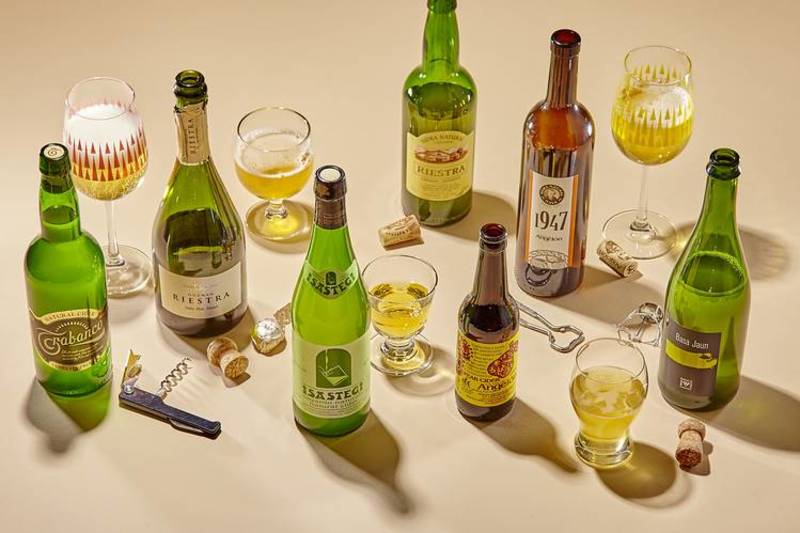
Wine 💲 💲 💲 💲
If not bought as a souvenir, it is worth trying Spanish wine in the restaurant. Spanish wines will surprise you with their low price. A sparkling variety of wine, Cava, deserves special attention.
🛒 Where to buy: supermarkets, restaurants, wine shops
💰 Price range: 5 - 30 EUR
💡 Pro tip: Small price does not mean that the wine will taste poorly.
🎁 For whom: grandparents, parents, spouse, friends
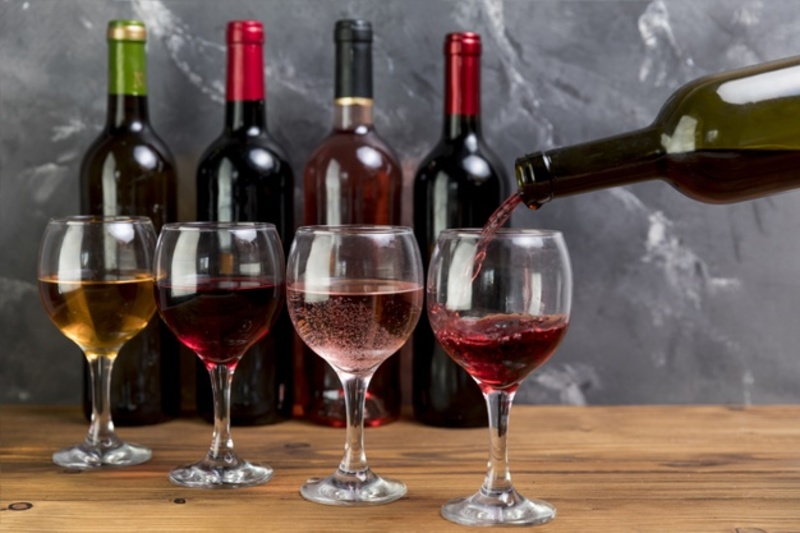
👚 Clothes
Espardeneyes 💲 💲 💲 💲
Espadrilles or Alpargatas are sandals made of coiled ropes and a piece of fabric. The local people argue about their place of origin, but most often you will find them in Catalonia and Mallorca. Extremely popular, they will appeal to anyone who likes practical souvenirs.
📌 Region: Catalonia
🛒 Where to buy: shoe shops, boutiques
💰 Price range: 5 - 20 EUR
💡 Pro tip: One pair lasts for about one season.
🎁 For whom: spouse, kids
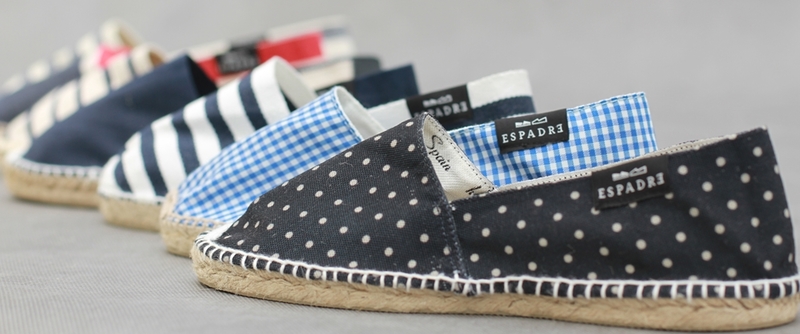
Football T-shirt 💲 💲 💲 💲
Spain has some of the best football clubs and players in the world. If you are a fan of FC Barcelona or Real Madrid, a jersey with your favorite player's number will be a great souvenir. Beware, however, of the attractive price, but poor quality fakes sold by street vendors.
🛒 Where to buy: stadiums, official club shops
💰 Price range: 50 - 100 EUR
💡 Pro tip: Watch out for counterfeit t-shirts with can be found in shopping malls.
🎁 For whom: parents, friends, kids

Shawls 💲 💲 💲 💲
Spanish shawls are used by women as a cover during summer evenings. The best quality shawls are made of silk, but it is easy to come across cheap substitutes. Traditional shalws are characterized by fancy, floral patterns and long tassels.
📌 Region: Andalusia
🛒 Where to buy: markets, gift shops
💰 Price range: 10 - 60 EUR
💡 Pro tip: It is best to purchase those one made of silk.
🎁 For whom: grandparents, parents, spouse, friends
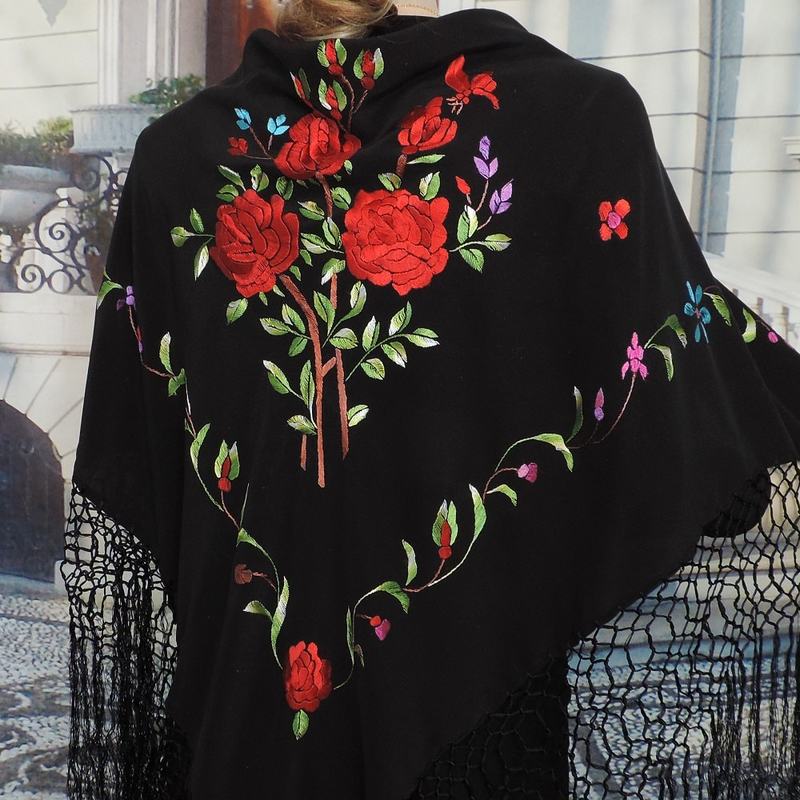
🛍 Collections
Bullfighting posters 💲 💲 💲 💲
These posters have their charm - they were to encourage participation in the corridas. They usually depict a correador holding a red cape and a bull breaking through it.
📌 Region: Andalusia
🛒 Where to buy: gift shops
💰 Price range: 4 - 15 EUR
🎁 For whom: friends

Castanets 💲 💲 💲 💲
Castanets are an important piece of equipment for the flamenco costume, associated with the region of Andalusia, from which the characteristic dance and music of the same name is derived. The castanets consist of two wooden elements, tied with a string or a thong. Thanks to a special construction, they fit each hand and make a specific sound of clattering.
📌 Region: Andalusia
🛒 Where to buy: gift shops
💰 Price range: 5 - 100 EUR
🎁 For whom: friends, spouse

Coral Jewelry 💲 💲 💲 💲
Popular among women, especially at the seaside, the jewelry fits well with any skin tone. In addition to jewelry made of coral, it is also worth buying jewelry made of pearls fished off the Spanish coast.
📌 Region: South Coast
🛒 Where to buy: markets, jewelry stores
💰 Price range: 5 - 80 EUR
🎁 For whom: spouse

Handheld fans 💲 💲 💲 💲
These colorful objects are available in large quantities in every souvenir store. They are less common with hand-made decorations often made by entire Spanish families. The most common are the floral patterns. Fans look nice when placed on a shelf or framed in a glass frame.
🛒 Where to buy: markets, gift shops
💰 Price range: 3 - 20 EUR
🎁 For whom: parents, friends, spouse

Paella accesories 💲 💲 💲 💲
If you have tried the true Hispanic paella and would like to play it at home, you should consider buying accessories to make it, such as a special pan, rice or spice for paella.
📌 Region: The Valencian Community
🛒 Where to buy: supermarkets, markets
💰 Price range: 3 - 150 EUR
🎁 For whom: grandparents, parents, spouse
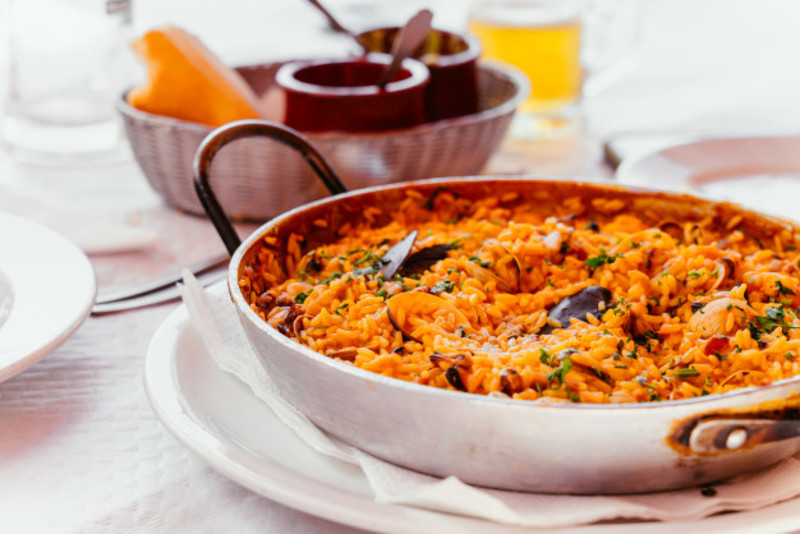
🥗 Food
Churros 💲 💲 💲 💲
Traditional Spanish treat, eaten for breakfast or as a snack during the day. It is a doughnut cake that takes on a unique shape thanks to special confectionery tubes. Fried in deep oil, traditionally served with sugar or with a chocolate building where it can be soaked.
🛒 Where to buy: markets, grocery stores, churrerias
💰 Price range: 5 - 10 EUR
💡 Pro tip: They taste the best bought in dedicated shops - Churerrias.
🎁 For whom: grandparents, parents, spouse, friends, kids
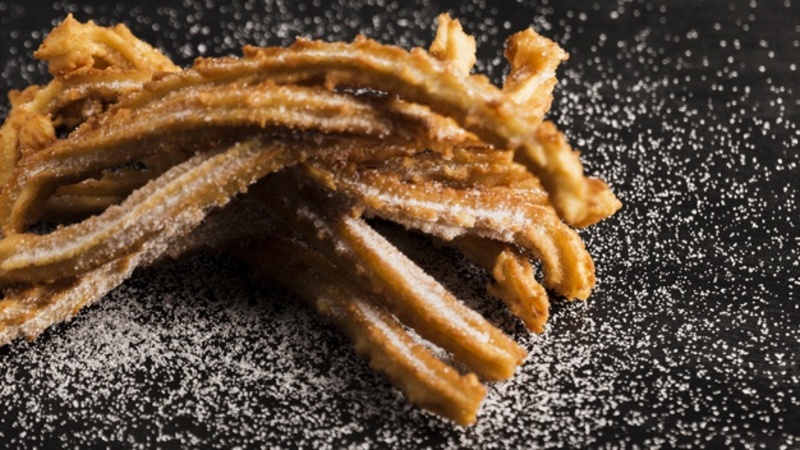
Jamon iberico 💲 💲 💲 💲
It is one of the most unique meat products in the world. There are many varieties of Iberian ham, but the most popular and appreciated versions are made from the leg of a pig. The ham can be bought sliced, in a piece or as a whole leg.
📌 Region: West Spain
🛒 Where to buy: supermarkets
💰 Price range: 5 - 50 EUR
🎁 For whom: grandparents, parents, friends
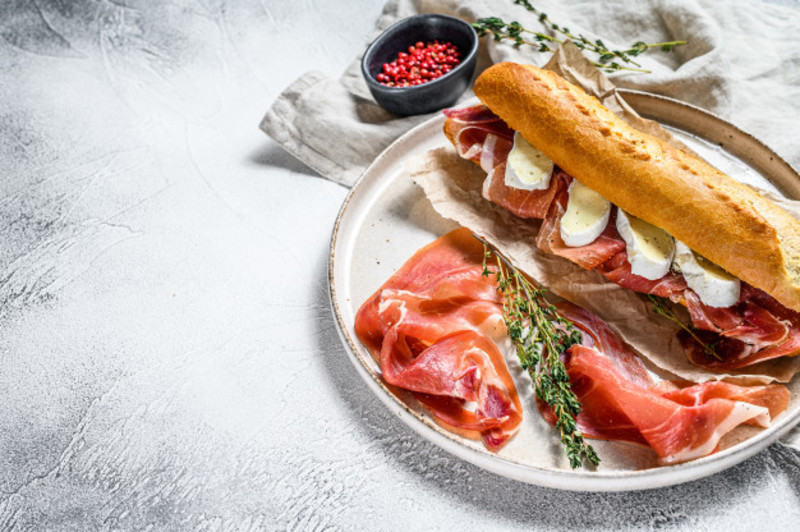
Olive oil 💲 💲 💲 💲
The world's largest oil producers come from the Andalusian region, where the olive trees grow due to the southern Mediterranean climate.
📌 Region: Andalusia
🛒 Where to buy: markets, supermarkets, gourmet shops
💰 Price range: 10 - 25 EUR
💡 Pro tip: Do not buy the cheapest one in the supermarkets.
🎁 For whom: grandparents, parents, spouse, friends
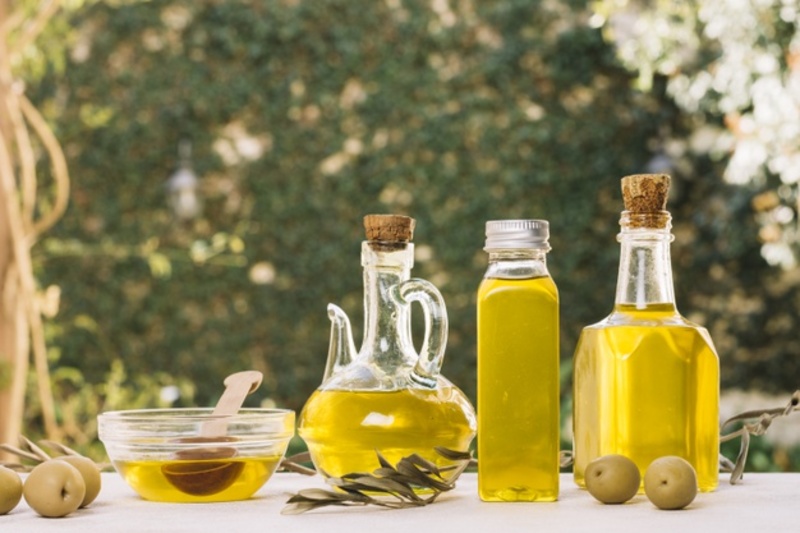
Paprika 💲 💲 💲 💲
It is one of the most popular and widely available Spanish spices. On sale it can be found in plain or smoked version, as well as in two flavor versions - sweet and spicy.
📌 Region: Extremadura, Murcia
🛒 Where to buy: markets, supermarkets, grocery stores
💰 Price range: 5 - 20 EUR
🎁 For whom: grandparents, parents, friends

Rabitos 💲 💲 💲 💲
A typical sweet snack of Spain - fig filled with chocolate or caramel, often additionally dipped in chocolate. Fig trees are characteristic of the Extremadura region, so it is worth looking for Rabitos in this region.
📌 Region: Extremadura
🛒 Where to buy: supermarkets, grocery stores
💰 Price range: 5 - 20 EUR
🎁 For whom: grandparents, parents, spouse, friends, kids
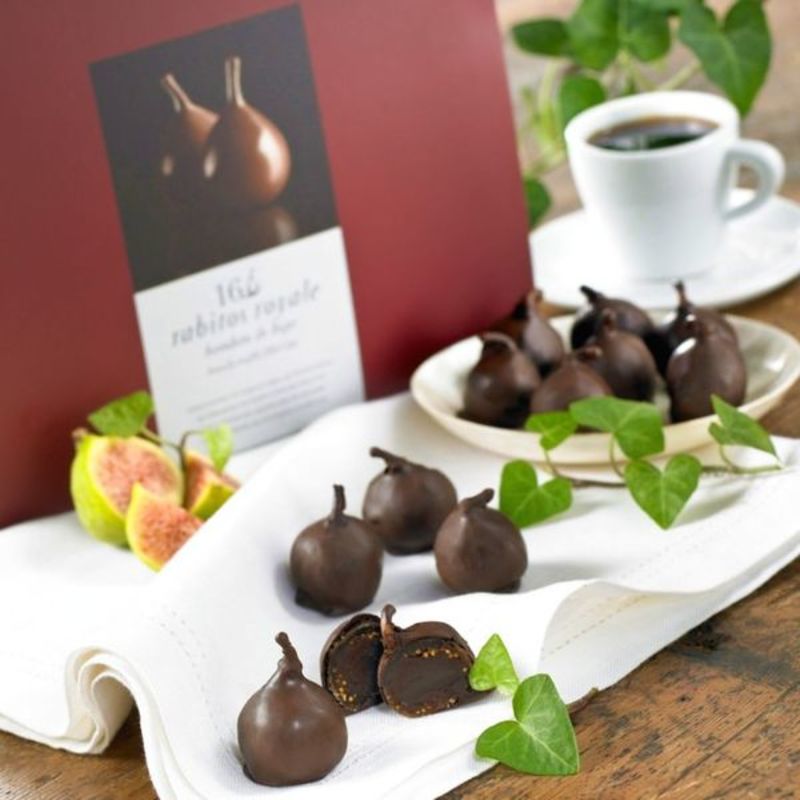
Saffron 💲 💲 💲 💲
Spain is one of the world's largest producers of saffron. This precious spice is added to many traditional Spanish dishes, such as paella.
📌 Region: Castilla-La Mancha
🛒 Where to buy: market
💰 Price range: 12 - 15 EUR
🎁 For whom: grandparents, parents, spouse, friends
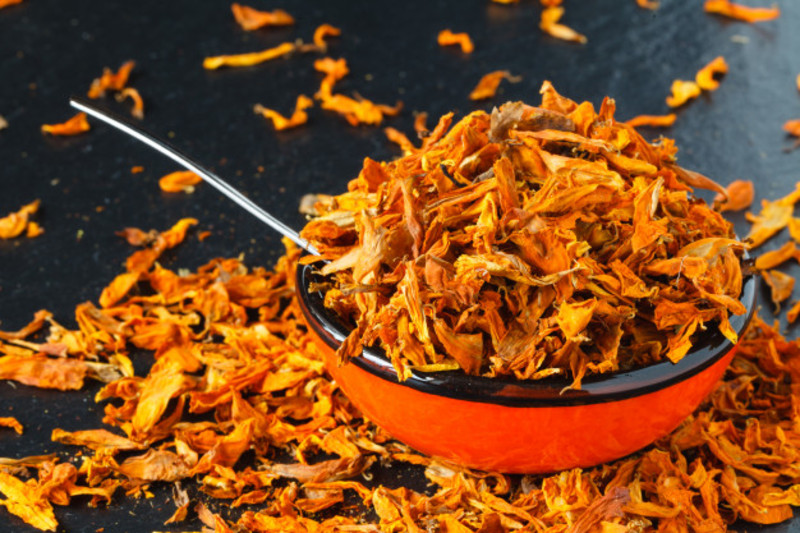
Violetas 💲 💲 💲 💲
Another one of the Spanish sweets, this time specific only to the Spanish capital. It owes its name to the color that these sweets take, namely violet.
📌 Region: Madrid
🛒 Where to buy: La Violeta Shop
💰 Price range: 5 - 15 EUR
🎁 For whom: grandparents, parents, spouse, friends, kids
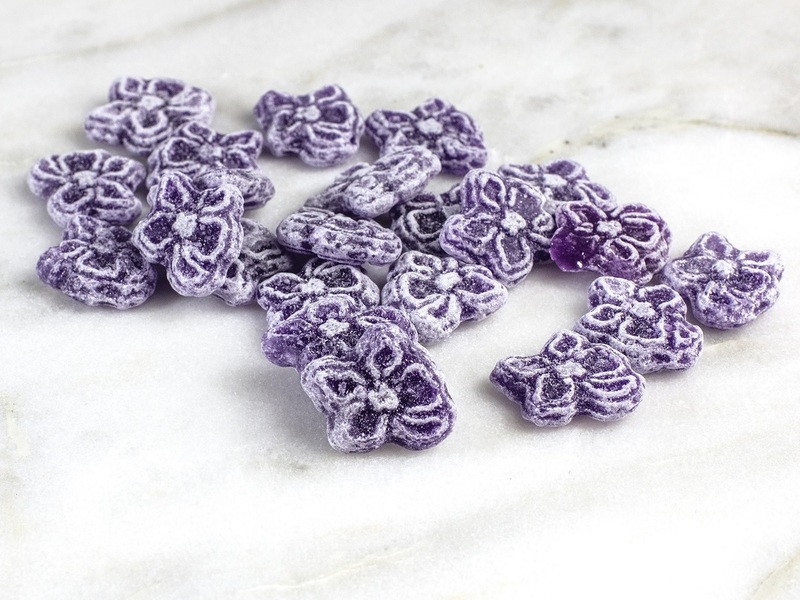
🏡 Home Decor
Ceramic lizards 💲 💲 💲 💲
It is a unique souvenir from the Canary Islands. It is also a symbol of Spain and Gaudi's work. The figurine is often made in a mosaic technique and sparkles with many colors.
📌 Region: Canaries
🛒 Where to buy: museums, gift shops
💰 Price range: 5 - 15 EUR
🎁 For whom: grandparents, parents, friends, spouse
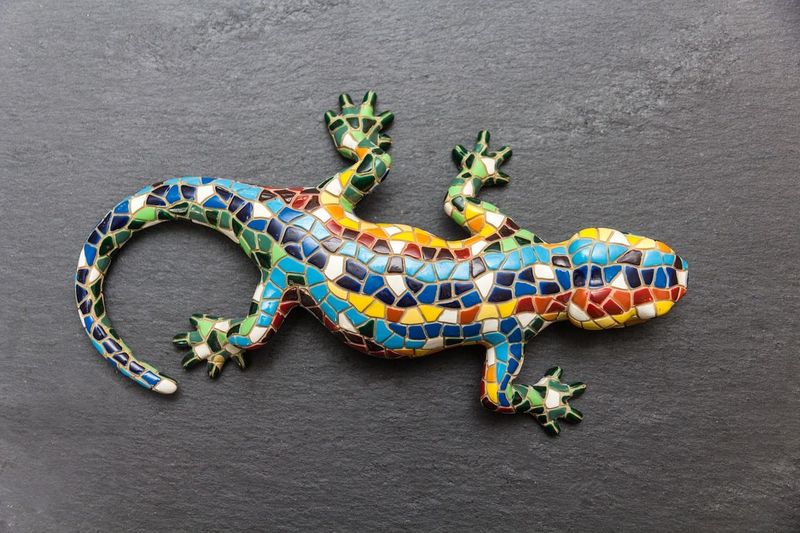
Ceramics 💲 💲 💲 💲
Each of the Spanish regions specializes in creating different, unique ceramics. It is worth checking not only those of Madrid but also those of Grenada, Toledo or the regions of Andalusia.
🛒 Where to buy: dedicated shops
💰 Price range: 10 - 300 EUR
🎁 For whom: grandparents, parents, spouse
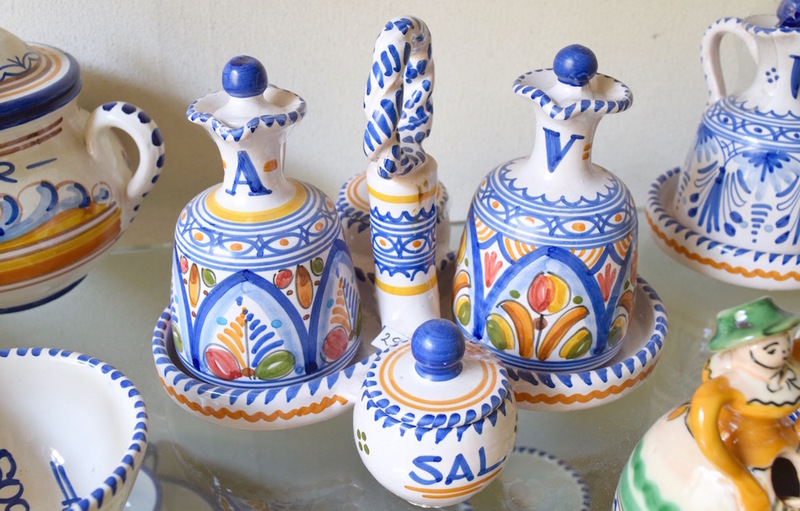
Wooden boxes 💲 💲 💲 💲
With their characteristic geometric engraved patterns, the wooden inlayed boxes are ideal for storing trinkets. Grenada, a city in the south of Spain, is famous for their production.
📌 Region: Andalusia
🛒 Where to buy: gift shops, dedicated shops
💰 Price range: 10 - 25 EUR
🎁 For whom: grandparents, parents, spouse, friends
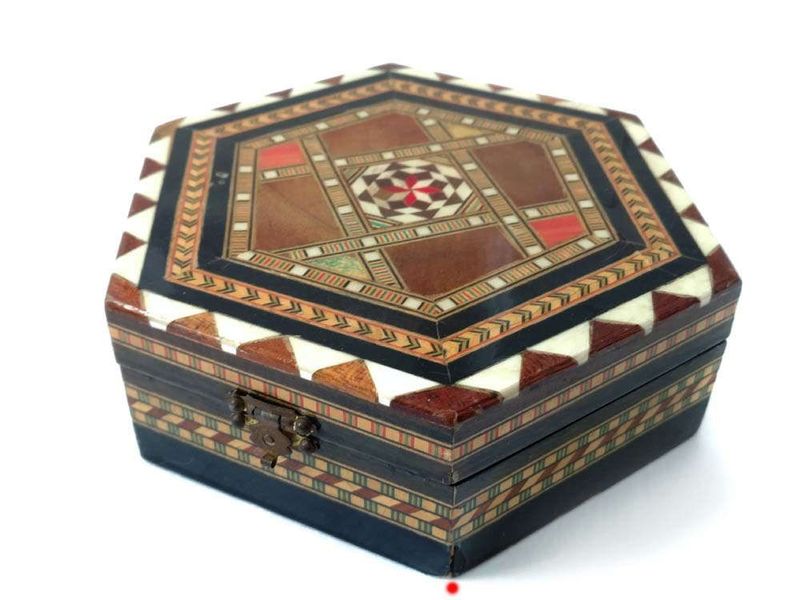
 Spain - Souvenirs
Spain - Souvenirs
What will you choose - excellent wine, beautiful ceramics or maybe castanets? You will surely find the best gift for yourself and your loved ones with this guide.
Did you find this information valuable?
Thank you for co-creating with us! 😊 Remember to give us feedback by pressing the thumbs up or down under every section.
The quality of content is essential for us. Please let us know what influenced your opinion.
Thank you!
Spain packing list 💡
- Cream with a high filter - Use it not only when you are planning a carefree laziness on the beach, but also when you go on a city trip or ... even go out to the store for a moment. During the holiday season in Spain, as many as 12 hours of sunshine await us.
- Comfortable, airy shoes - This country loves so-called "cobblestones" and walking in high heels will be simply very uncomfortable or practically impossible.
- Warmer clothes - It will come in handy when traveling to the northern regions.
- Accessories for sunny days - Glasses, a cap with a visor, cream with a UV filter and soothing after sunscreen will be useful,
- Bright, lightweight clothing - This will help better able to withstand high temperatures.
Did you find this information valuable?
Thank you for co-creating with us! 😊 Remember to give us feedback by pressing the thumbs up or down under every section.
The quality of content is essential for us. Please let us know what influenced your opinion.
Thank you!
Get a personalized packing list before travel to Spain 🧳
Health information
Health risks and required vaccinations
Packing lists
Personalized item list to pack matching your destination
Weather insights
Packing list adjusted to local weather
To-do lists
Everything you need to do before leaving home
Weight limits
Never pay excess baggage fees again
Local prices
Average cost of food, tickets and accommodation
Things to do in Spain ⭐
- Most popular sports: 🚴 Cycling, 🤿 Diving, ⛵ Sailing
- Most popular activities: 🥾 Hiking, 🏖️ Sunbathing, 🤿 Snorkeling
- Must see places: 🌄Timanfaya National Park, 🌊 Salto del Nervión, 📷 Puente Nuevo
Top attraction in Spain 📸
Tourist information about Spain
| Country | Spain |
| Capital | Madrid |
| Currency | European euro |
| Language | Spanish |
| Timezone | GMT+1 |
| English speaking | Widely spoken (medium) |
| LGBT tolerance | Very high |
| Gender ratio (overall) | 51% | 49% |
| Population | 46.8 mln |
| Visitors per year | 83.7 mln |
Did you find this information valuable?
Thank you for co-creating with us! 😊 Remember to give us feedback by pressing the thumbs up or down under every section.
The quality of content is essential for us. Please let us know what influenced your opinion.
Thank you!
Useful information about Spain
| Card payments | |
| ATM Availability | Widely available |
| Suggested ATM takeout | 100 EUR |
| Drinking in public | |
| Tap water | |
| Internet speed (avg.) | 42 Mbps |
| Socket type |
|
| Best taxi app | |
| Public toilets | Unpopular & Free |
| Top mobile providers | Movistar, Vodafone, Orange, Yoigo |
| Best internal air carrier | Iberia |
Did you find this information valuable?
Thank you for co-creating with us! 😊 Remember to give us feedback by pressing the thumbs up or down under every section.
The quality of content is essential for us. Please let us know what influenced your opinion.
Thank you!
Cost of living in Spain
| Meal, Inexpensive Restaurant |
10 EUR
11.75 USD
8.8 GBP
42.25 PLN
|
| Meal for 2 People, Mid-range Restaurant |
40 EUR
46.98 USD
35.21 GBP
169.01 PLN
|
| Domestic Beer (0.5 liter draught) |
2.5 EUR
2.94 USD
2.2 GBP
10.56 PLN
|
| Gasoline (1 liter) |
1.31 EUR
1.54 USD
1.15 GBP
5.54 PLN
|
| One-way ticket (public transport) |
1.5 EUR
1.76 USD
1.32 GBP
6.34 PLN
|
Did you find this information valuable?
Thank you for co-creating with us! 😊 Remember to give us feedback by pressing the thumbs up or down under every section.
The quality of content is essential for us. Please let us know what influenced your opinion.
Thank you!
Quality of life in Spain
| Quality of life | Very high |
| Safety Index | High |
| Healthcare likability | High |
| Climate likability | Very high |
| Costs of living | Low |
| Level of pollution | Low |
Did you find this information valuable?
Thank you for co-creating with us! 😊 Remember to give us feedback by pressing the thumbs up or down under every section.
The quality of content is essential for us. Please let us know what influenced your opinion.
Thank you!
Important numbers
| General emergency number (mobile phone) | 112 |
| Fire | 80 |
| Police | 92 |
| Ambulance | 61 |
Did you find this information valuable?
Thank you for co-creating with us! 😊 Remember to give us feedback by pressing the thumbs up or down under every section.
The quality of content is essential for us. Please let us know what influenced your opinion.
Thank you!

